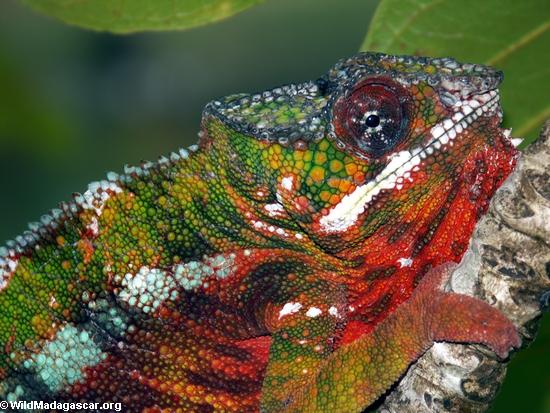|

|
Chameleon in Madagascar
|
WHY DO RAINFORESTS HAVE SO MANY KINDS OF PLANTS AND ANIMALS?
Tropical rainforests support the greatest diversity of living organisms on Earth. Although they cover less than 2% of Earth's surface, rainforests house more than 50% of plants and animals on Earth. Here are some examples of the richness of rainforests:
- rainforests have 170,000 of the world's 250,000 known plant species
- the United States has 81 species of frogs, while Madagascar which is smaller than Texas, may have 300 species.
- Europe has 321 butterfly species, while a park in the rainforest of Peru (Manu National Park) has 1300 species.
Rainforests have an abundance of plants and animals for the following reasons:
- Climate: because rainforests are located in tropical regions, they receive a lot of sunlight. This sunlight is converted to energy by plants through the process of photosynthesis. Since there is a lot of sunlight that means there is a lot of energy in the rainforest. This energy is stored in plant vegetation which is eaten by animals. Because there is a lot of food there are many species of plants and animals.
- Canopy: the canopy structure of the rainforest means there are more places for plants to grow and animals to live. The canopy offers new sources of food, shelter, and hiding places, provides another world for interaction with between different species. For example there are plants in the canopy called bromeliads that store water in their leaves. Animals like frogs use these pockets of water for hunting and laying their eggs.

|
|